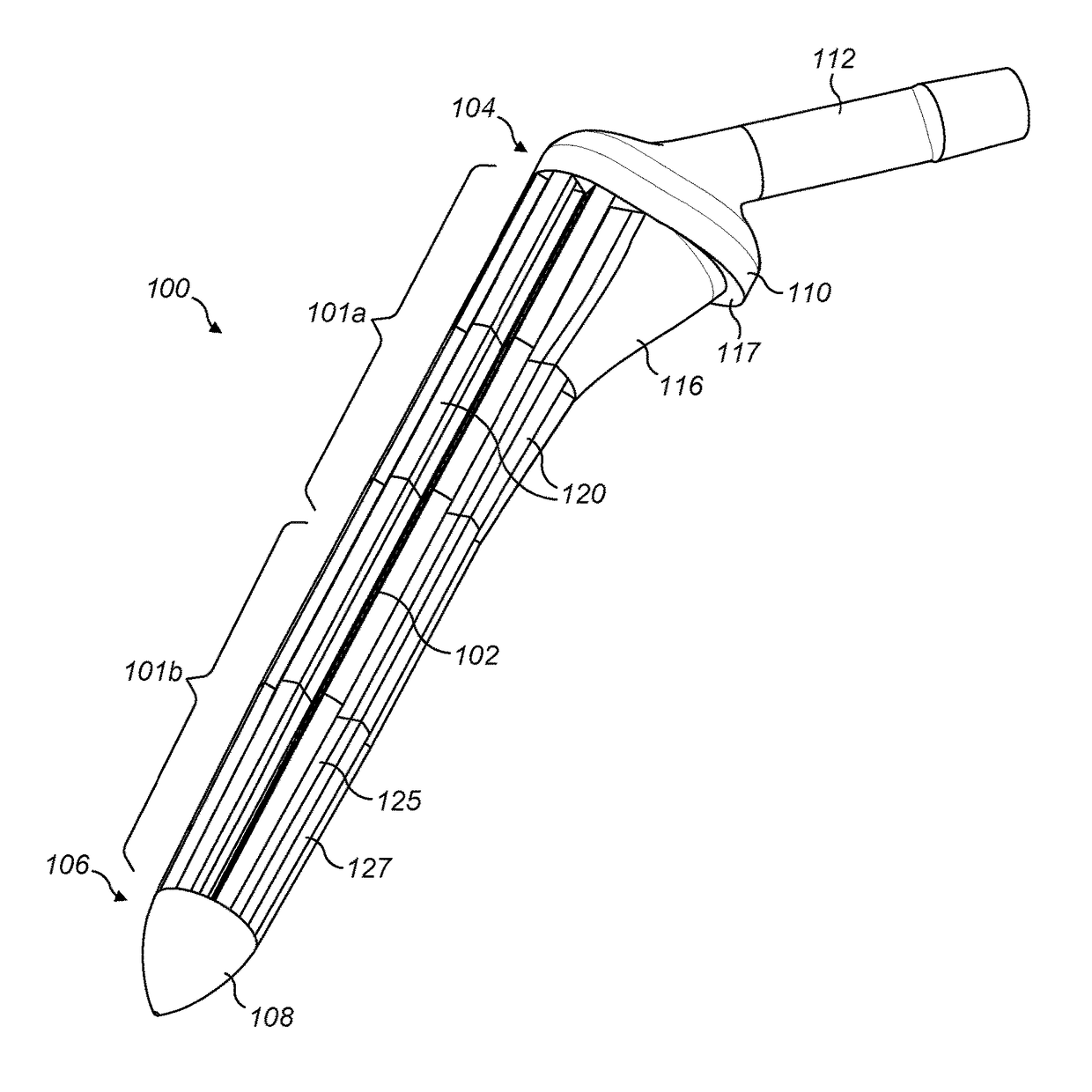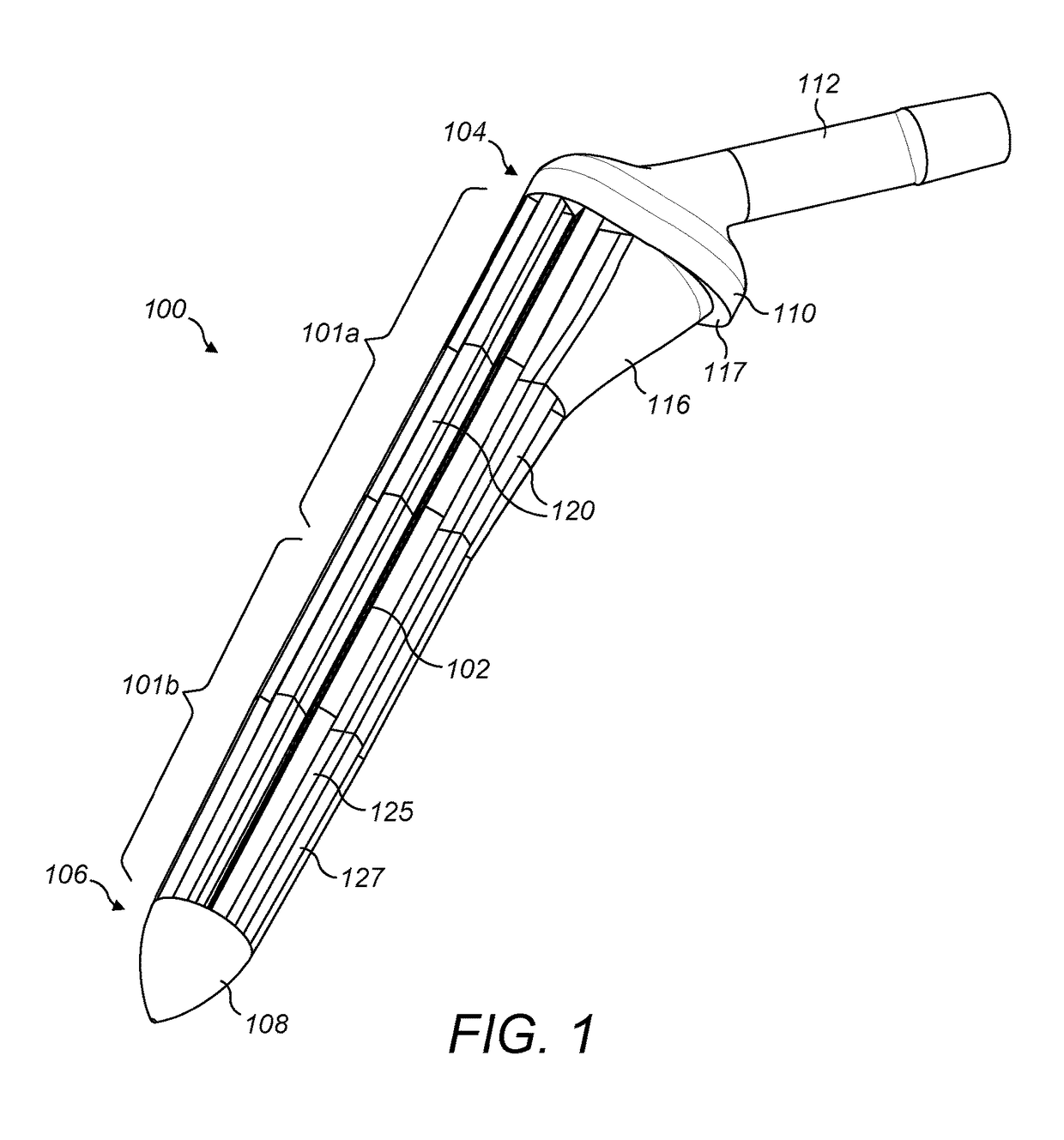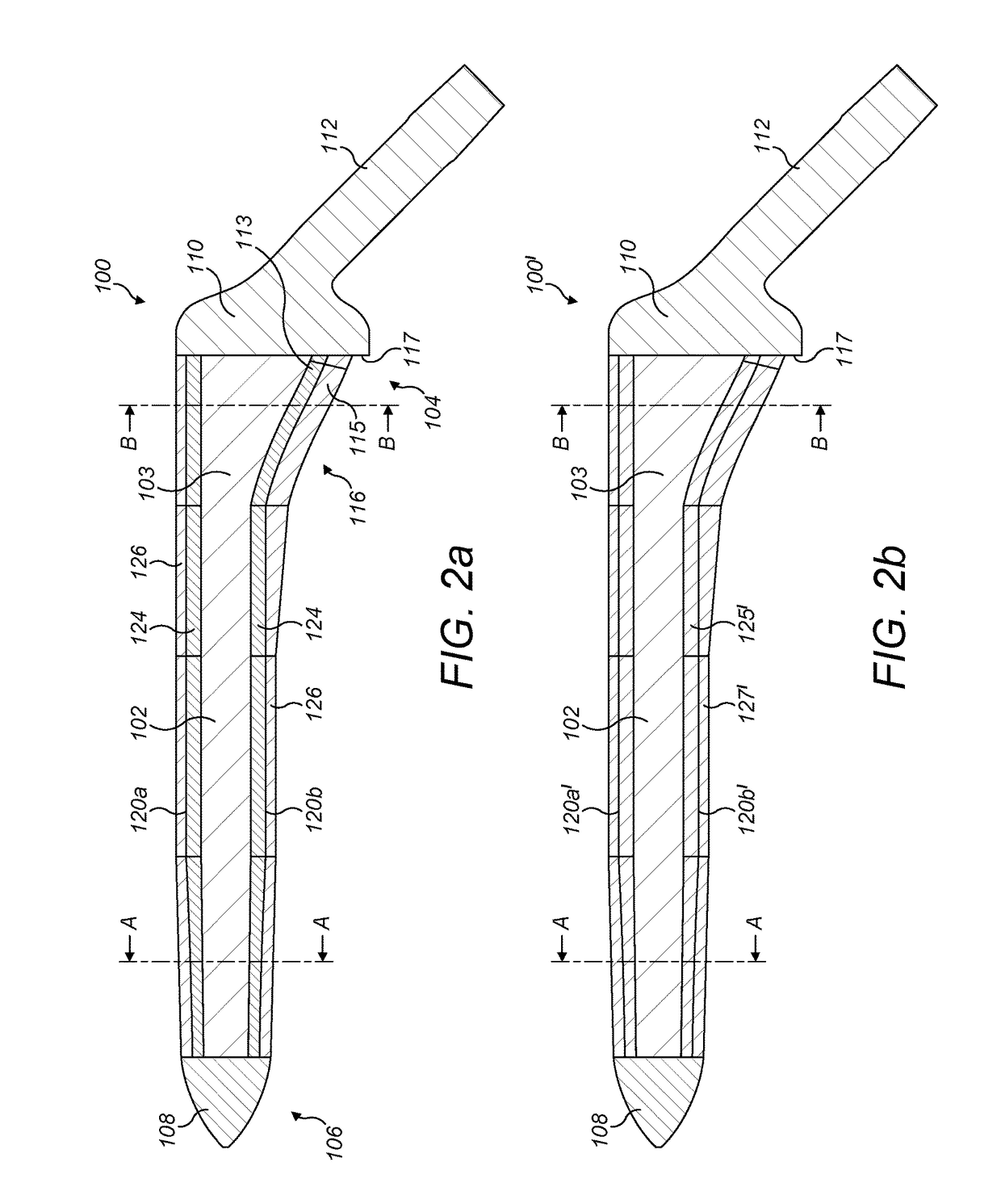Hip stem
a hip joint and stem technology, applied in the field of prosthetic implants, can solve the problems of increasing the risk of fat embolism and cardiopulmonary complications, limiting the ability to perform normal activities, and debilitating the hip joint, and achieve the effect of less invasive and cheaper manufacturing
- Summary
- Abstract
- Description
- Claims
- Application Information
AI Technical Summary
Benefits of technology
Problems solved by technology
Method used
Image
Examples
Embodiment Construction
[0090]FIGS. 1 and 2a, 3a and 4b illustrate a first exemplary hip stem 100. The hip stem 100 comprises a central core 102 extending longitudinally within the stem from a proximal end 104 to a distal end 106. A tip 108 is located at the distal end 106 and a collar 110 is located at the proximal end 104. An attachment portion 112 extends from the collar 110 at the proximal end 104 of the stem 100 at an angle of approximately 45 degrees from a longitudinal axis of the stem in the medial direction, for the attachment thereto of a femoral head component (not shown), as known in the art. A thickened proximal medial portion 116 is located towards the proximal end 104, forming a buttress connecting the collar 110 with the main part of the stem for supporting load transfer to the proximal medial wall of the femur when the stem is located in situ within a patient's femoral canal. A lip 117 may be formed between a peripheral edge of the proximal end of the thickened proximal medial portion 116 ...
PUM
 Login to View More
Login to View More Abstract
Description
Claims
Application Information
 Login to View More
Login to View More - R&D
- Intellectual Property
- Life Sciences
- Materials
- Tech Scout
- Unparalleled Data Quality
- Higher Quality Content
- 60% Fewer Hallucinations
Browse by: Latest US Patents, China's latest patents, Technical Efficacy Thesaurus, Application Domain, Technology Topic, Popular Technical Reports.
© 2025 PatSnap. All rights reserved.Legal|Privacy policy|Modern Slavery Act Transparency Statement|Sitemap|About US| Contact US: help@patsnap.com



